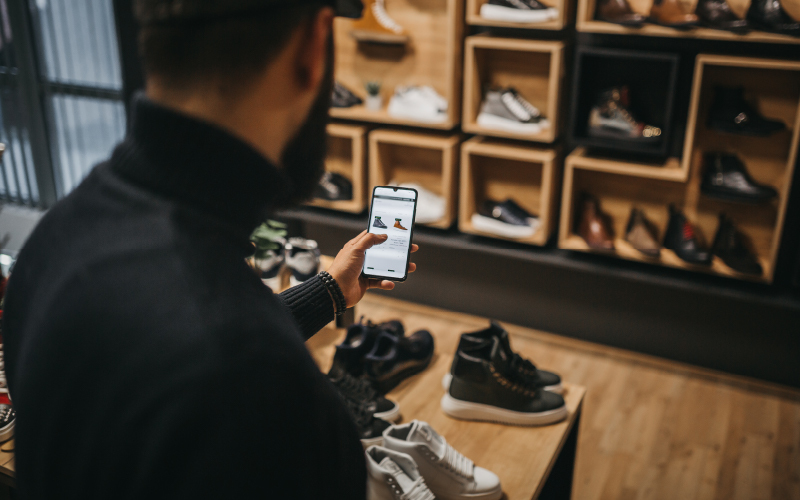Quick summary:
Way back (around 9000 BC), people traded cows and sheep. Then in 3000 BC, money came along in Mesopotamia. Fast-forward to 800 BC in ancient Greece, shops and markets, like the Agora, popped up. Now, everything’s online, even your shop! So, the big question: Will eCommerce take over physical stores?
How have we reached a point in time where we are even discussing if eCommerce can dominate physical stores. Simply because, the pandemic was an evidence of the lifesaving power of the internet. The world could help each other regardless of geographical boundaries because of the internet.
And now that mega brands are flourishing online, eCommerce is a proven formidable force in the world. But, will it trump physical stores? Let’s find out.
Contents
- 1 What is the difference between physical retail and eCommerce?
- 2 eCommerce growth in India
- 3 What are the classifications of eCommerce?
- 4 What are the 4 pillars of eCommerce?
- 5 Why is eCommerce in competition with retail?
- 6 Will eCommerce dominate physical stores?
- 7 Future of retail: eCommerce, physical stores, showrooming & webrooming
- 8 Extend reach: Power your physical & online store with Instamojo
What is the difference between physical retail and eCommerce?
First, let’s understand the basic concepts.
Physical retail is the traditional in-person commerce method, with customers visiting brick-and-mortar stores for face-to-face transactions.
On the flip side, eCommerce is the online buying and selling of products, offering convenience with virtual catalogues, online payments, and home delivery.
Explore some more factors of distinctions in the table below.
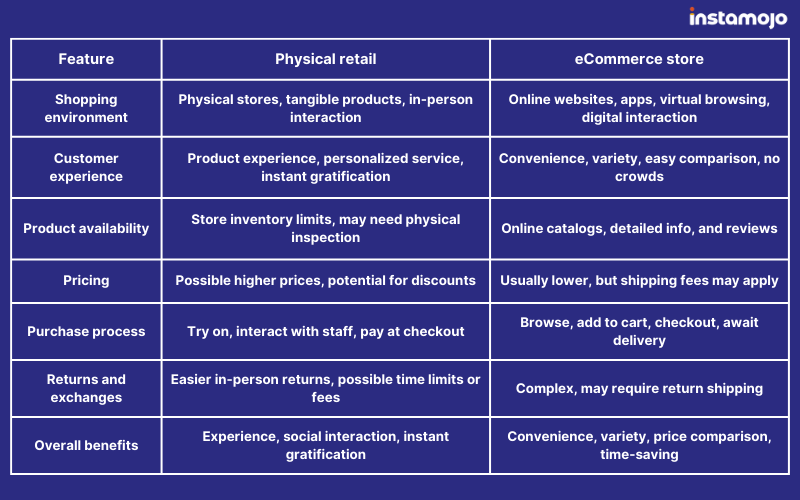
eCommerce growth in India
eCommerce has done incredibly well in India, considering it is the second-largest online market in the work.
ECBD projected India to grow at a 5.4% CAGR from 2023-2027 and the market is set to hit US$108,060.8 million by 2027, contributing to a global growth rate of 8.7%.
Seven key segments dominate the Indian eCommerce market:
- Hobby & Leisure (23.8%)
- Electronics (23.4%)
- Fashion (18.5%)
- Furniture & Homeware (11.2%)
- Care Products (8%)
- Grocery (7.7%)
- DIY (7.4%)
What do you mean by eCommerce?
To deeply understand how eCommerce sets itself apart from physical retail, let’s find out what are the 7 Cs of eCommerce.
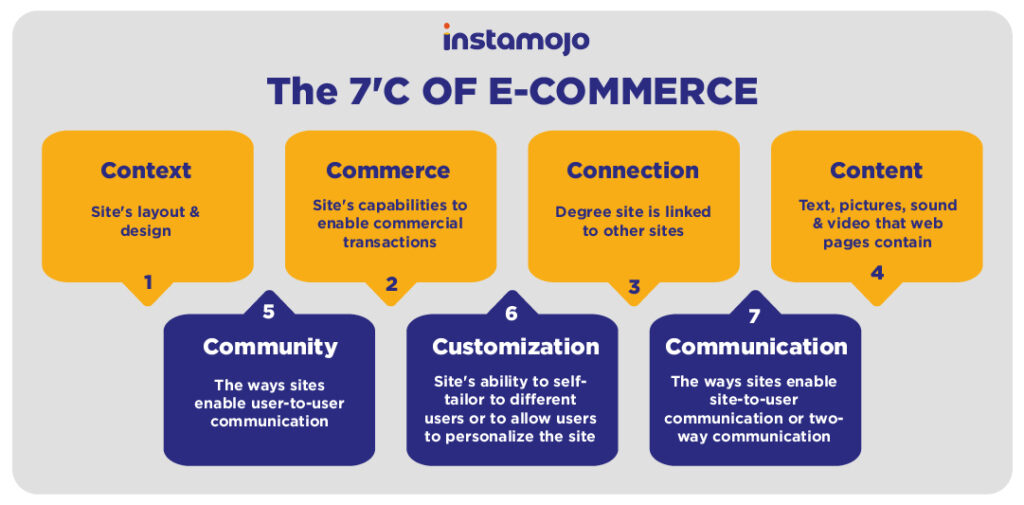
What are the classifications of eCommerce?
Before we dive in more, let’s start by exploring the basics of eCommerce. It’s important to understand the traditional types that have shaped the eCommerce scenario we see today.
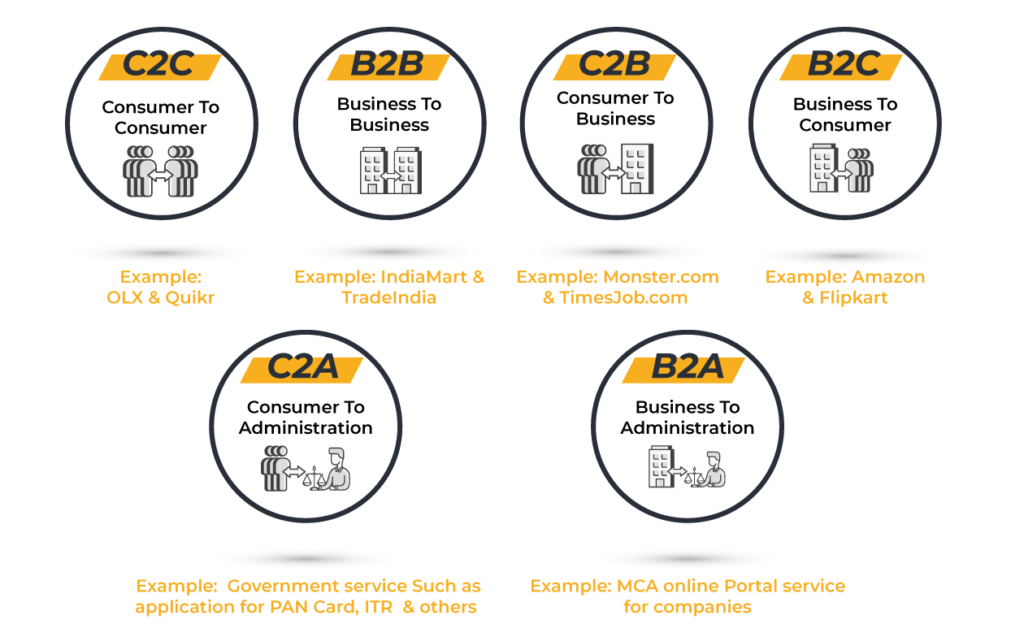
- Business-to-Consumer (B2C): The familiar model where businesses sell directly to consumers—think shopping for clothes in your pyjamas or ordering groceries from your couch, the essence of B2C eCommerce.
- Consumer-to-Consumer (C2C): Platforms like Quikr and OLX facilitate direct swaps of goods and services between people, creating an online garage sale with hidden gems and unique finds.
- Business-to-Business (B2B): B2B connects businesses worldwide, handling transactions from raw materials to office supplies and specialized software, forming a crucial backbone of the global economy.
- Consumer-to-Business (C2B): Here, consumers offer their skills, knowledge, or creative ideas to businesses through platforms like Upwork and freelancer marketplaces, contributing to specific projects or ongoing services.
- Business-to-Administration (B2A): Specialized in business-government interactions, B2A platforms streamline processes like filing taxes online or applying for permits, enhancing public administration and transparency.
- Consumer-to-Administration (C2A): Similar to B2A, C2A connects individuals directly with government agencies for tasks like e-filing taxes, paying fines, or accessing official documents online, simplifying citizen engagement with government services.
What are the 4 pillars of eCommerce?
Every business needs foundational pillars to start; similarly, it’s crucial to highlight the 4 key pillars essential for an eCommerce business.
Among the various pillars of eCommerce, we’ll focus our discussion on the primary 4 foundations.
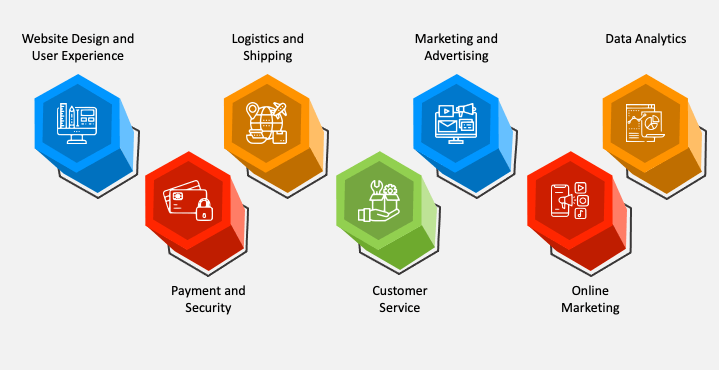
1. Website design and UX
- Importance: A sleek interface enhances user engagement and streamlines purchasing.
- Key considerations: Prioritize mobile responsiveness, easy navigation, and clear product displays.
Related read: Website design trends that’ll wow in 2024
2. Product information
- Importance: Accurate details are crucial for informed decision-making.
- Key considerations: Include specifications, size guides, usage instructions, and customer reviews.
Related read: How to write product descriptions
3. Payment and security
- Importance: Secure payment processes build customer trust.
- Key considerations: Integrate secure payment gateways and transparently communicate security measures.
4. Logistics and customer service
- Importance: Efficient order fulfilment and excellent service boost loyalty.
- Key considerations: Ensure reliable logistics, transparent shipping info, and responsive customer support.
Here is an example of an eCommerce business that is powered by Instamojo. This tribal-focussed ethical brand makes and sells handmade products to customers all over India. Thanks to their eCommerce website. Here is the story of Beejpaatra
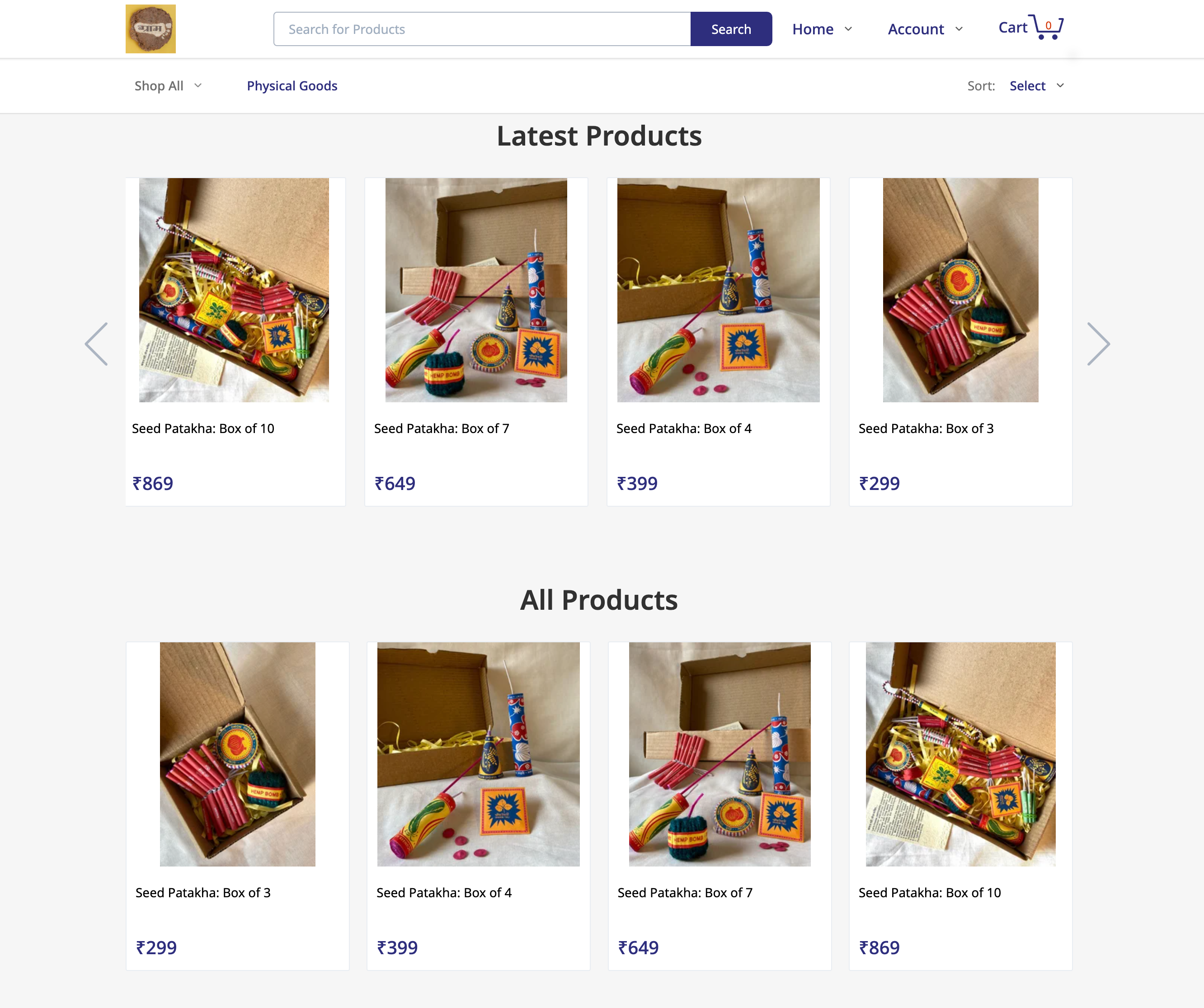
Support this small business here
Why is eCommerce in competition with retail?
People always talk about whether online shopping or regular shopping is better, you know? Well, let’s open up on why many people think online shopping, aka eCommerce, has the upper hand:
- Global reach: eCommerce enables businesses to reach a global audience without needing physical storefronts.
- 24/7 availability: Online stores operate round the clock, offering customers flexibility in making purchases.
- Wider product selection: eCommerce allows for a broader product range compared to physical stores, providing more choices.
- Personalized shopping: Online platforms can personalize the shopping experience based on customer preferences.
- Comparison shopping: Consumers can easily compare prices and features, empowering them to make informed decisions.
India’s retail market is projected to grow to 1.7 trillion U.S. dollars by 2026, up from 883 billion dollars in 2020.
Will eCommerce dominate physical stores?
The answer isn’t a simple yes or no. It’s actually a combination of both that will thrive and prosper in the years to come. Brands will have to engage in an omnichannel strategy so that they can leverage the positives of the online world, as well as the human element of the physical stores.
Here’s a further breakdown:
- Team up, don’t take over: Use the power of marketing strategies like showrooming and webrooming to gain the customers’ trust. Both channels can co-exist and offer your customers a distinct shopping experience.
- Best of both worlds: A physical store acts as an advertisement for your brand. An online store acts as the central brain of your brand. Here’s how it works:
- More visibility: You show up in person and for online shoppers – double the chances for people to find you!
- Flexibility for shoppers: Some like to touch, some like to click. Offering both means you cater to all kinds of shoppers.
- 24/7 accessibility: Your physical store might close, but online? Always open for business!
See how Stree Kolkata, a D2C sustainable clothing brand, is leveraging the best of both worlds. Her online store hosted on Instamojo shows off their entire collection along with festive sales and personalized recommendations for her buyers. She is our proud Mojo Star!

Her physical retail store in Kolkata proved a safe space for loyal customers to come and experience their textile before choosing to purchase them. It allows the brand owners to humanise themselves by meeting the customers directly at exhibitions and pop-up stores!
Check out Stree Kolkata’s store here
Future of retail: eCommerce, physical stores, showrooming & webrooming
Retail is transforming with eCommerce, revamped physical stores, and the dynamics of showrooming and webrooming. Check out how retailers adapt to meet modern consumer demands.
- eCommerce and physical stores: The eCommerce boom emphasizes convenience, but physical stores remain vital, evolving into immersive spaces beyond transactions.
- Showrooming and webrooming: Consumers can explore in-store products before online purchases (showrooming), or research online before in-store buys (webrooming). To succeed, retailers must enhance in-store experiences, providing seamless online-to-offline transitions.
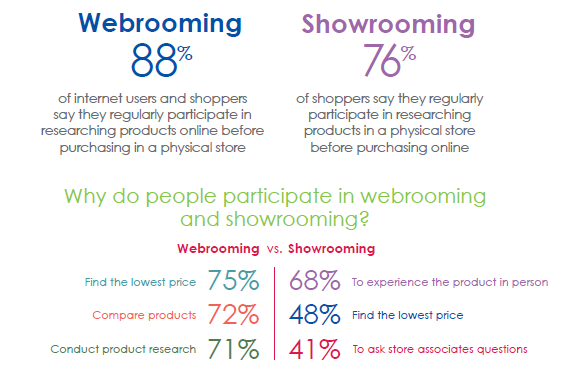
- Omnichannel integration: The future demands breaking barriers between eCommerce and physical stores. Consistent brand presence, inventory visibility, and unified customer experiences are essential.
- Data-driven personalization: Harnessing data analytics is key to understanding consumer preferences. eCommerce allows for personalization through data insights enabling targeted promotions and a tailored shopping experience.
Extend reach: Power your physical & online store with Instamojo
Ready to take your business to the next level? Let Instamojo work its magic for your physical store and eCommerce game!
With Instamojo, you’re not just expanding; you’re creating a seamless blend of in-store charm and online convenience.
It’s the time to neglect the hassle, get more sales, and build your online store!

